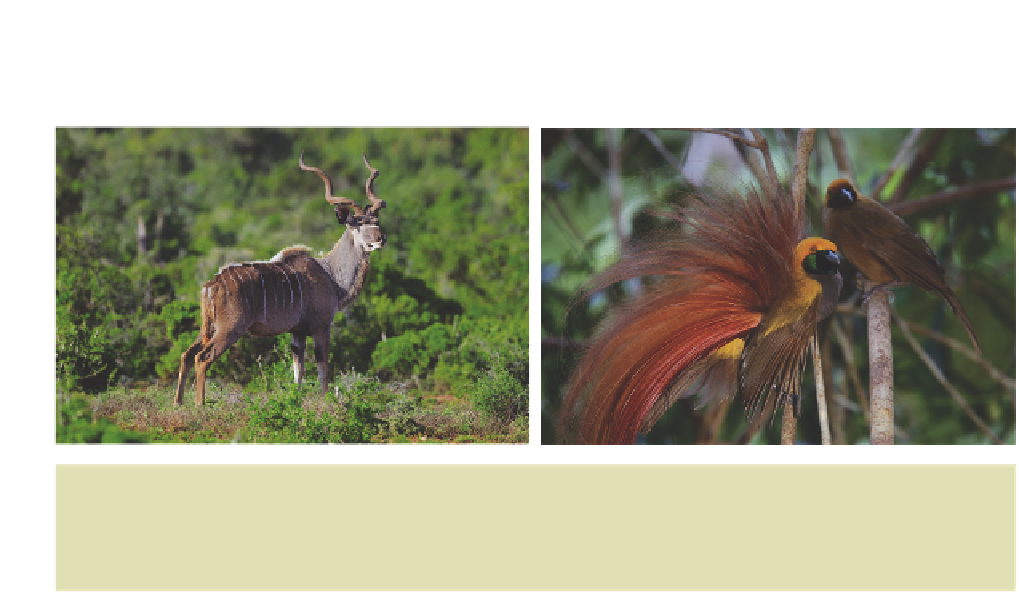Biology Reference
In-Depth Information
(a)
(b)
Fig. 7.1
Darwin's theory of sexual selection was proposed to explain the evolution of traits, usually found in
males, concerned with competition for mates, either by force or by charm. (a) Horns of the male kudu
Tragelaphus strepsiceros
. Photo © Oliver Krüger. (b) Ornaments of the male Raggiana bird of paradise
Paradisaea raggiana
, left, on display to a female, right. Photo © Tim Laman/naturepl.com
Males and females
Differences in gamete size
Sexual reproduction entails gamete formation by meiosis and the fusion of genetic
material from two individuals. It almost always, but not invariably, involves two sexes
called male and female. In higher animals the sexes are often most readily distinguished
by external features such as genitalia, plumage, size or colour, but these are not the
fundamental differences. In all plants and animals the fundamental difference between
the sexes is the size of their gametes: females produce large, immobile, food-rich gametes
called eggs, while male gametes or sperm are tiny, mobile and consist of little more than
a piece of self-propelled DNA. Sexual reproduction without males and females occurs in
many simple, unicellular organisms, such as
Paramecium
, where the 'gametes' which
fuse during sex are of the same size. This is referred to as
isogamous
sexual reproduction.
The fusion of two gametes of unequal size, one large and one small is, however, much
commoner and occurs in virtually all sexually reproducing multicellular plants and
animals. It is called
anisogamous
sex.
Parker
et al
. (1972) proposed an elegant model to explain how anisogamy might
have evolved from isogamy. Assume that the survival of a zygote depends on its size;
the larger the zygote the more food to sustain its development and so the better its
chance of surviving. Larger gametes would be favoured by selection if this increase in
survival more than compensated for the fact that larger gametes could be produced in
smaller numbers. For example, if an individual's resources could be divided into two
large or four small gametes, then the zygote produced by large gametes would have to
be more than twice as good at surviving for large gametes to be favoured by selection.
Females: the sex
that produces
large gametes
Evolution of
anisogamy





























